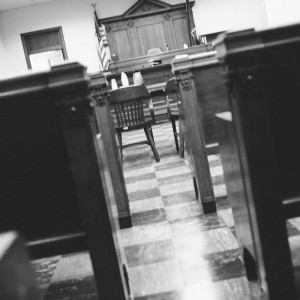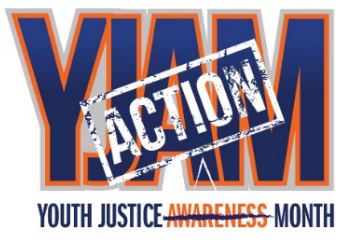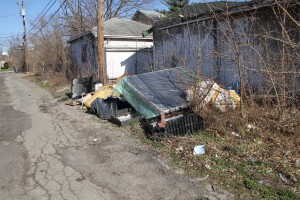 Sitting behind her strikingly barren desk, with the bright, mid-winter sunlight breaking through the trees and streaming through her office windows, Martha Grace Duncan, a professor at the Emory University School of Law, in Atlanta recounts the case of nine-year-old Cameron Kocher. As she speaks her small, compact frame remains nearly motionless, betraying no emotion. But her eyes tell the story, portraying the internal mix-up of sadness, passion and nerdy intensity that she feels about the topic. Duncan may not wear her heart on her sleeve, but if you pay attention it’s not hard to find.
Sitting behind her strikingly barren desk, with the bright, mid-winter sunlight breaking through the trees and streaming through her office windows, Martha Grace Duncan, a professor at the Emory University School of Law, in Atlanta recounts the case of nine-year-old Cameron Kocher. As she speaks her small, compact frame remains nearly motionless, betraying no emotion. But her eyes tell the story, portraying the internal mix-up of sadness, passion and nerdy intensity that she feels about the topic. Duncan may not wear her heart on her sleeve, but if you pay attention it’s not hard to find.
In March 1989, on a cold, snowy day in the Pocono Mountains of northeastern Pennsylvania, Kocher fatally shot a seven-year-old playmate with a high-powered hunting rifle. He had been playing video games with the girl at her house when she told him that she was better at the game than he. Soon, the girl went outside to ride snowmobiles with other friends and Kocher, angry that his parents wouldn’t let him join them, retrieved the rifle from his father’s gun cabinet, loaded it and pointed it out the window of his home. Then, as the girl rode with a friend on a snowmobile, Kocher shot her in the back.
Minutes later, as the girl lay dying in her living room, Kocher returned to the girl’s house telling another playmate, “If you don’t think about it, you won’t be sad.”
As Kocher’s case progressed through the courts, many took the quote, coupled with the shooting, as evidence of a cold, remorseless child. Uttering that sentence would have severe repercussions for Kocher, beginning with the question of whether he would be treated as an adult by the courts.
In 2002, Duncan published a lengthy article for the Columbia Law Review that explored how expectations of displays of remorse affect how children are treated in the juvenile justice system, particularly in adjudication and sentencing. Duncan, who also holds a doctorate in political science, applied elements of psychology, sociology and literature to several case studies in the article.



 ter weather is starting to break. Snow showers and subzero temperatures are replaced with rain showers and flowers. For some neighborhoods in Dayton, Ohio the break in the weather brings light to a major issue. The issue of illegal dumping is highly visible once the piles of snow have melted away. In some instances, neighborhoods have been left with tons of trash and debris. For several blocks certain alleyways can be found with couches, mattress, appliances and construction waste.
ter weather is starting to break. Snow showers and subzero temperatures are replaced with rain showers and flowers. For some neighborhoods in Dayton, Ohio the break in the weather brings light to a major issue. The issue of illegal dumping is highly visible once the piles of snow have melted away. In some instances, neighborhoods have been left with tons of trash and debris. For several blocks certain alleyways can be found with couches, mattress, appliances and construction waste. A couple of weeks ago, I was in juvenile delinquency court and as often happens, a particular case got me thinking – and rethinking – about the system as a whole.
A couple of weeks ago, I was in juvenile delinquency court and as often happens, a particular case got me thinking – and rethinking – about the system as a whole. A Superior Court in Washington, D.C., is redirecting minors with mental health problems from the juvenile system to treatment and rehabilitation. JM-4, a former juvenile mental health division court, is led by Magistrate Judge Joan Goldfrank, who is known for listening to families and dispensing wisdom and services to kids.
A Superior Court in Washington, D.C., is redirecting minors with mental health problems from the juvenile system to treatment and rehabilitation. JM-4, a former juvenile mental health division court, is led by Magistrate Judge Joan Goldfrank, who is known for listening to families and dispensing wisdom and services to kids. Sitting behind her strikingly barren desk, with the bright, mid-winter sunlight breaking through the trees and streaming through her office windows,
Sitting behind her strikingly barren desk, with the bright, mid-winter sunlight breaking through the trees and streaming through her office windows,  Juveniles transferred to adult corrections systems reoffend at a higher rate than those who stay in the juvenile justice system, according to a new report from the National Institute of Corrections (NIC). The report also found insufficient evidence that trying youths as adults acts as a crime deterrent.
Juveniles transferred to adult corrections systems reoffend at a higher rate than those who stay in the juvenile justice system, according to a new report from the National Institute of Corrections (NIC). The report also found insufficient evidence that trying youths as adults acts as a crime deterrent. Adolescence is a challenging time for most people. Teenagers undergo significant developmental, physical, psychological, and social changes during a condensed decade of time. We have all done embarrassing things as adolescents; however, we are comforted by our coming of age and the slow regression of those memories. According to a
Adolescence is a challenging time for most people. Teenagers undergo significant developmental, physical, psychological, and social changes during a condensed decade of time. We have all done embarrassing things as adolescents; however, we are comforted by our coming of age and the slow regression of those memories. According to a  In the year that I have worked as a juvenile defender, I have noticed patterns in the types of cases that land on my desk. For instance, now that the school year is in full swing, the overwhelming majority of my juvenile caseload arises from school discipline issues. It seems — at least here in southeast Georgia — as though schools are either no longer interested or no longer equipped to handle discipline in-house.
In the year that I have worked as a juvenile defender, I have noticed patterns in the types of cases that land on my desk. For instance, now that the school year is in full swing, the overwhelming majority of my juvenile caseload arises from school discipline issues. It seems — at least here in southeast Georgia — as though schools are either no longer interested or no longer equipped to handle discipline in-house. Recently signed legislation in Maryland
Recently signed legislation in Maryland 

 Reclaiming Futures
Reclaiming Futures 


 Greg Berman
Greg Berman New York Times: Rethinking Addiction’s Roots, and Treatment
New York Times: Rethinking Addiction’s Roots, and Treatment